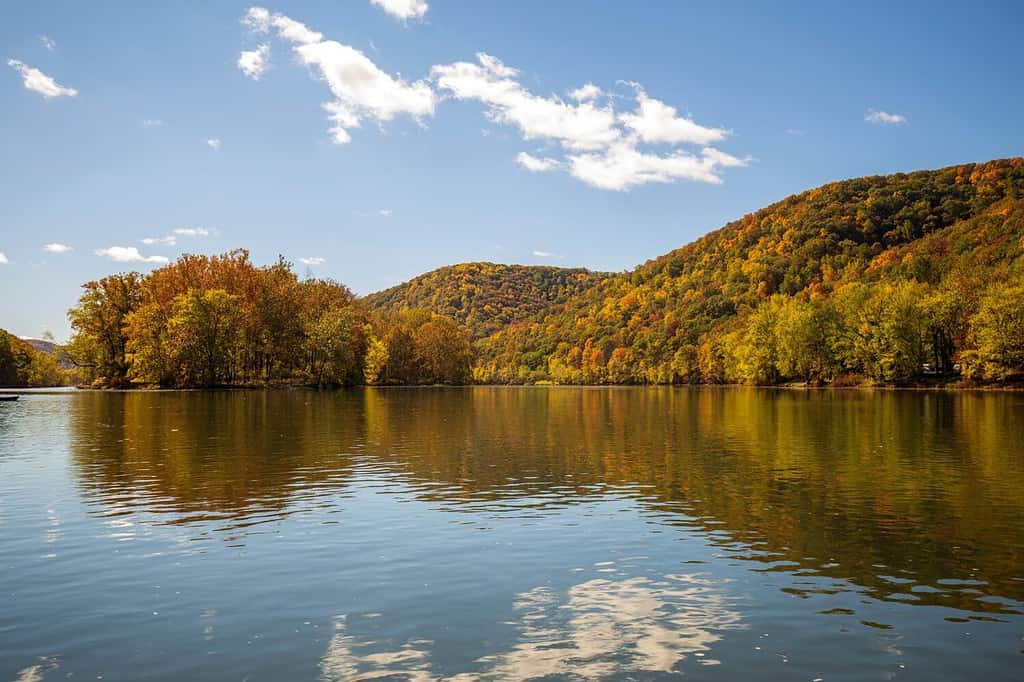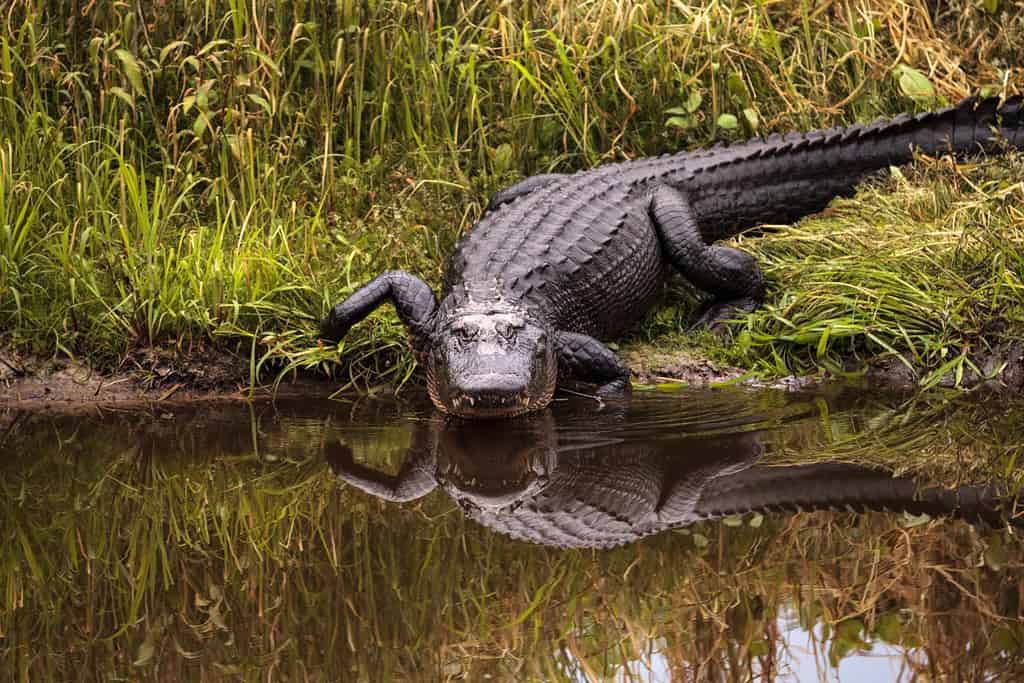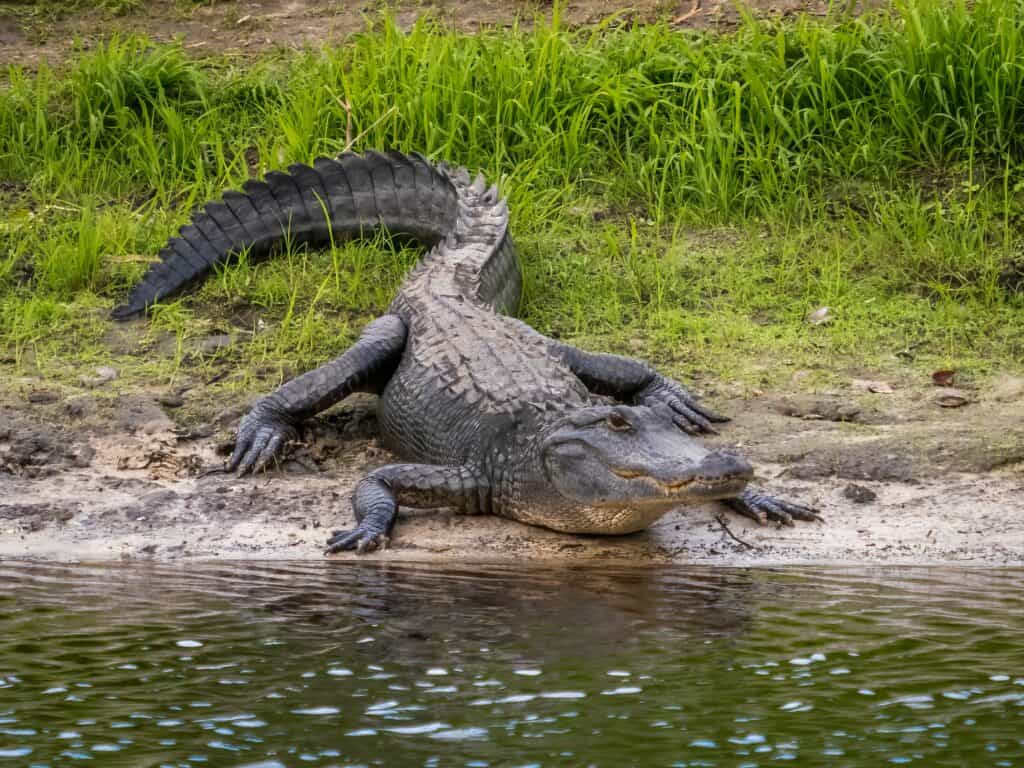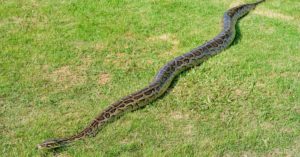If you have the pleasure of exploring Pennsylvania, look forward to seeing beautiful wildlife. The state is home to a rich abundance of flora and fauna, but does that include alligators? This article will investigate if there are alligators in Pennsylvania and discuss the factors that influence their presence or absence in the state.
Background
Pennsylvania

The scenic Allegheny River in Warren, Pennsylvania, is beautiful during the colorful autumn months.
©Piper VanOrd/Shutterstock.com
Pennsylvania is in the northeastern part of the United States. A wide range of landscapes characterizes the state, from rolling hills and fertile valleys in the east to the rugged Appalachian Mountains in the west. The Appalachian Plateau covers much of the western part of the state, with elevations gradually rising towards the Allegheny Mountains. In the eastern portion of Pennsylvania, on the other hand, the area features the fertile and populous Piedmont region, including the city of Philadelphia. The Susquehanna River bisects the state, running from north to south, and creates fertile valleys like the Susquehanna Valley.
Climate

In Pittsburgh, summers are warm and humid, but winters are often well below freezing.
©Pascal Vosicki/Shutterstock.com
Pennsylvania experiences a varied climate, primarily influenced by its geographical diversity. The eastern part of the state has a humid subtropical climate with hot summers and cold winters. In contrast, the western part, especially in the higher elevations, leans toward a humid continental climate with colder winters and milder summers. Coastal influences from the nearby Atlantic Ocean can bring significant precipitation throughout the year. Pennsylvania has beautiful, vibrant autumn foliage, which attracts tourists from far and wide.
Habitats
The state’s diverse geography and climate support a rich variety of habitat types. In the wooded regions of the Allegheny Mountains and the Appalachian Plateau, you’ll find extensive hardwood forests dominated by species like oak, maple, and hickory. These areas provide habitat for a diverse array of wildlife, including white-tail deer, black bears, and various bird species. The fertile valleys of the east are home to agricultural land and suburban areas but still offer pockets of natural habitats, such as riparian zones along rivers and wetlands. Pennsylvania also has several state parks and protected areas, preserving unique ecosystems like the Pine Barrens of the Pocono Mountains and the lush woodlands of the Allegheny National Forest. Overall, Pennsylvania’s geography and climate contribute to a rich tapestry of habitats that support a wide range of plant and animal species.
Alligators

A male American alligator can weigh up to 500 pounds.
©SunflowerMomma/Shutterstock.com
Alligators are fascinating reptiles belonging to the family Alligatoridae and the genus Alligator. There are two species of alligators: the American alligator (Alligator mississippiensis) and the Chinese alligator (Alligator sinensis). The American alligator is the more well-known of the two and is primarily found in the southeastern United States, including states like Florida, Louisiana, Georgia, and Texas. Chinese alligators, on the other hand, are much rarer and are native to eastern China. These reptiles have a lineage dating back millions of years, making them living relics from the time of dinosaurs.
Alligators are semi-aquatic creatures with a strong preference for freshwater habitats such as swamps, marshes, lakes, and slow-moving rivers. They have adaptations supporting both aquatic and terrestrial life such as webbed feet for efficient swimming and powerful limbs for crawling on land. Alligators are cold-blooded, which means they rely on external sources of heat to regulate their body temperature. They often bask in the sun to warm themselves.
Alligators are opportunistic carnivores and play a crucial role in their ecosystems as top predators. Their diet primarily consists of fish, birds, mammals, and amphibians. They are known for their stealthy hunting techniques, lying in wait near the water’s edge and ambushing prey that comes too close. Alligators have formidable jaws filled with sharp teeth, and they are capable of delivering a powerful bite force. They can also swallow smaller prey whole. During the colder months or when food is scarce, alligators can go without eating for extended periods. During these periods, they rely on their fat reserves for energy. This adaptability and their impressive evolutionary history make alligators a fascinating and ecologically important species.
Are There Alligators in Pennsylvania?
Alligators are not native to Pennsylvania and do not typically live in the state’s natural habitats. Pennsylvania’s climate and geographical features, particularly its colder winters and northern location, are not suitable for sustaining alligator populations. These reptiles primarily inhabit warmer and more subtropical regions of the southeastern United States, such as Florida, Louisiana, and Georgia. While Pennsylvania has diverse wildlife, including various species of reptiles, alligators are not part of its native fauna. Any presence of alligators in Pennsylvania would likely be the result of exotic pet ownership or isolated and temporary occurrences rather than established wild populations.

Alligators live in aquatic environments and can sometimes be found in slow-flowing river deltas.
©Jim Schwabel/Shutterstock.com
Alligators are ectothermic reptiles, meaning their body temperature is regulated by external factors. They require consistently warm temperatures to survive and thrive. Pennsylvania’s climate has characteristically cold winters, with temperatures frequently dropping below the minimum threshold alligators can tolerate. In the winter, alligators become lethargic and enter a state of dormancy, which is essential for their survival in their native range. The colder temperatures and harsh winters in Pennsylvania make it unsuitable for maintaining alligator populations.
Additionally, alligators have specific habitat preferences, favoring freshwater swamps, marshes, and rivers. Pennsylvania has forests, valleys, and mountains, but it lacks the extensive wetland ecosystems and subtropical conditions that alligators need to establish viable populations.
The photo featured at the top of this post is © Deborah Ferrin/Shutterstock.com
Thank you for reading! Have some feedback for us? Contact the AZ Animals editorial team.






